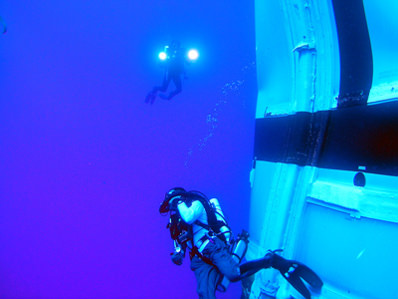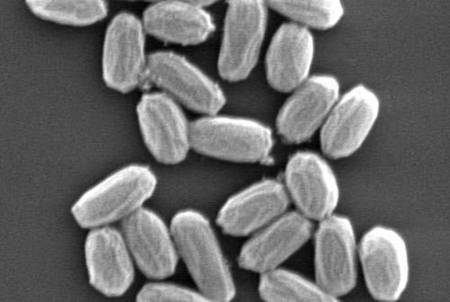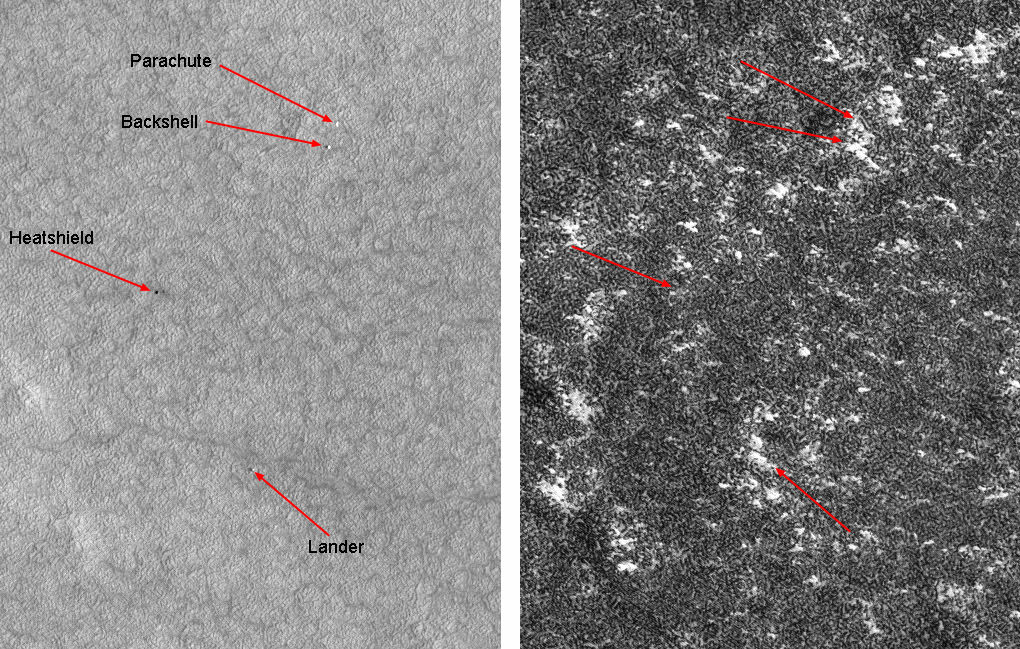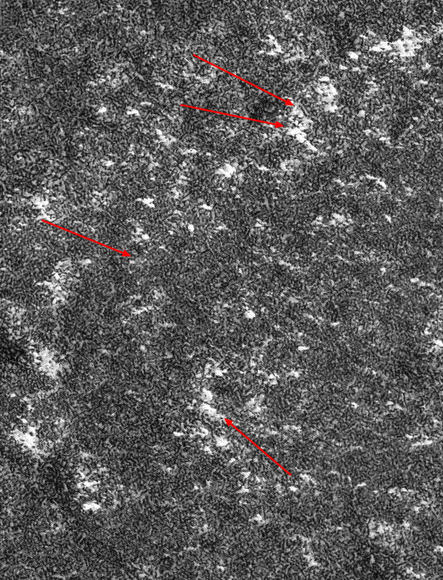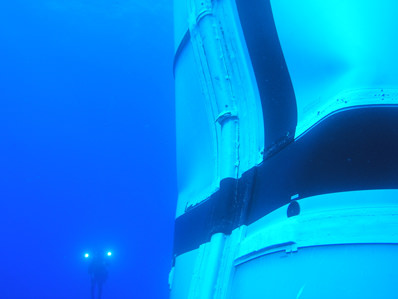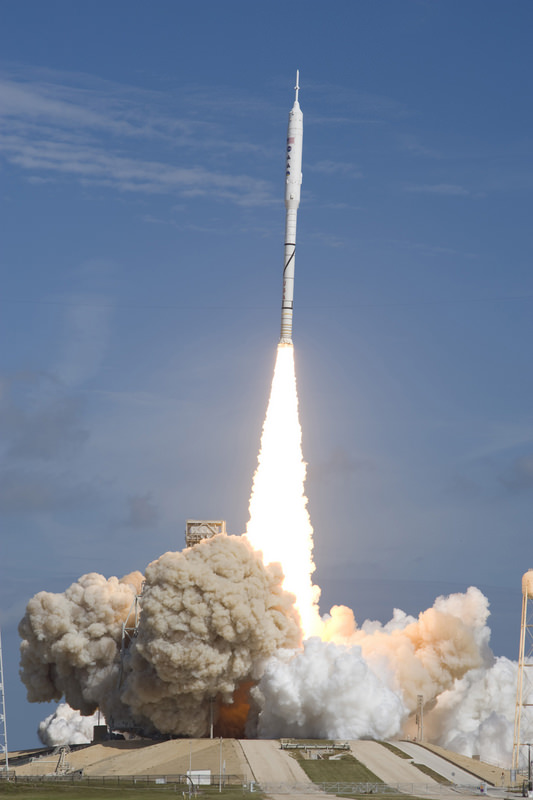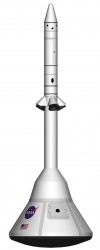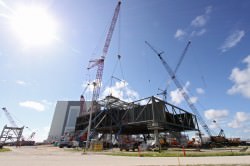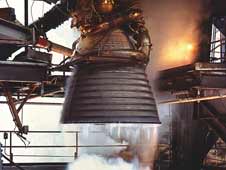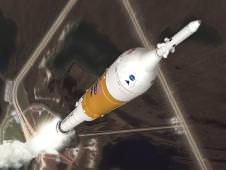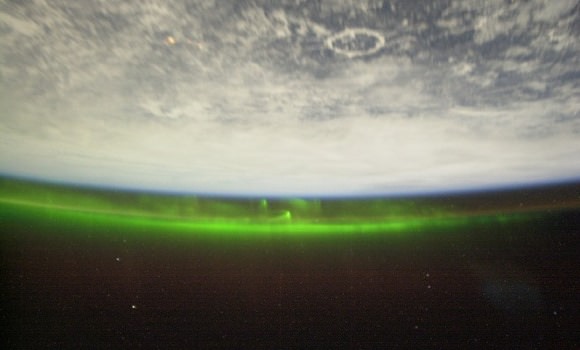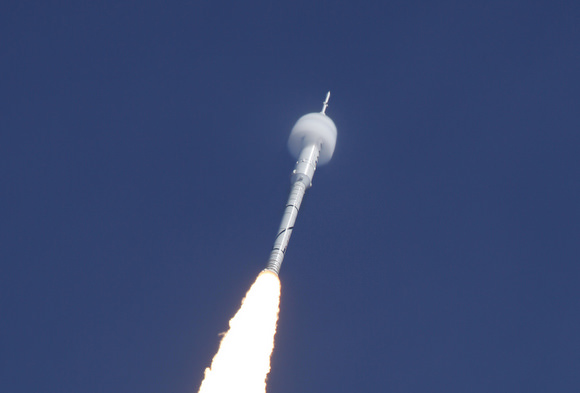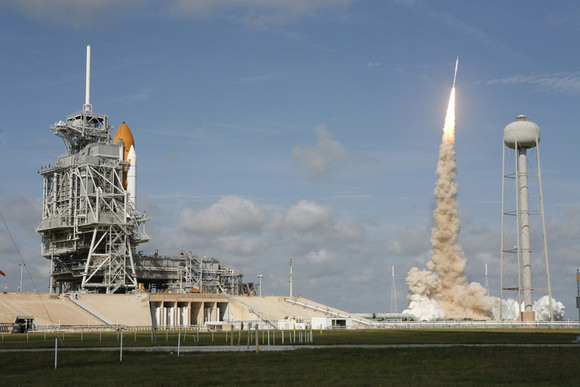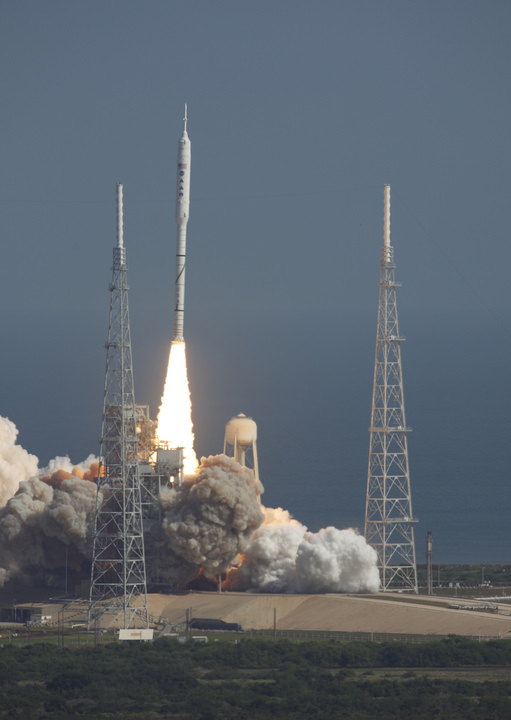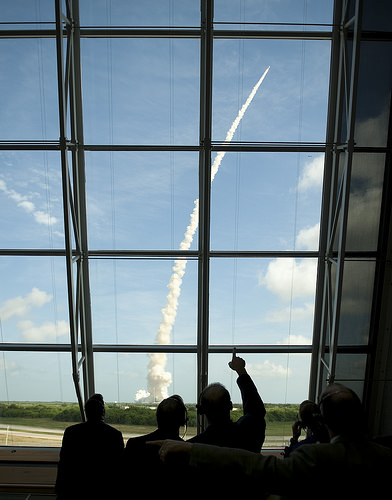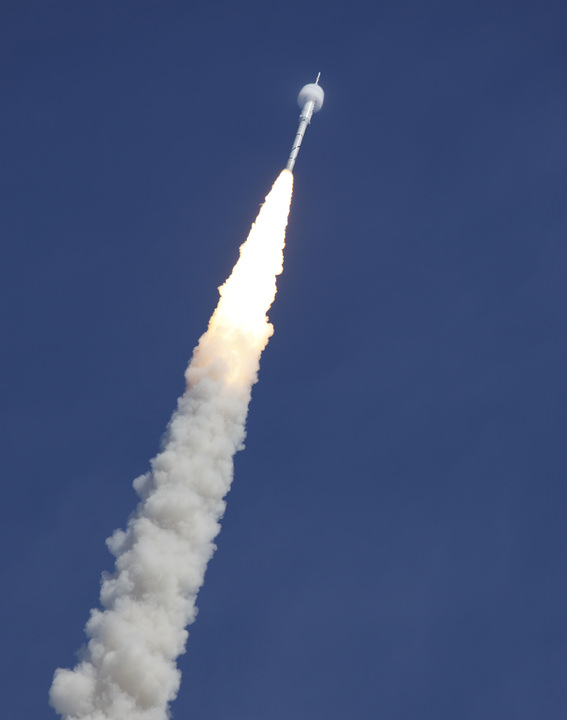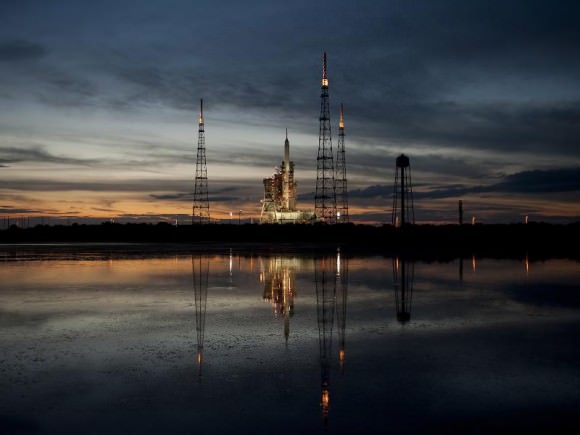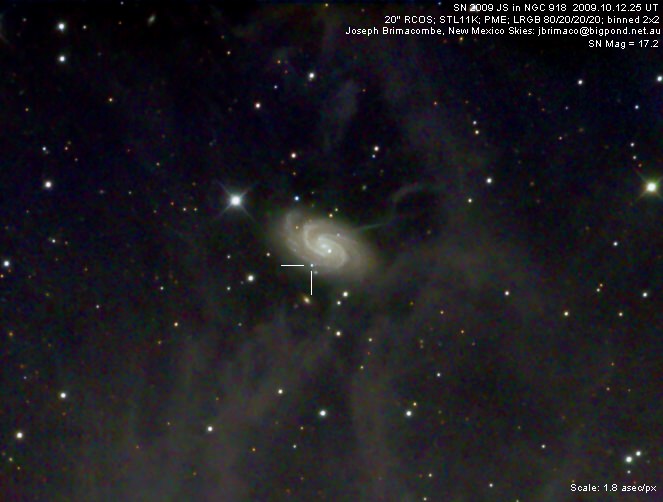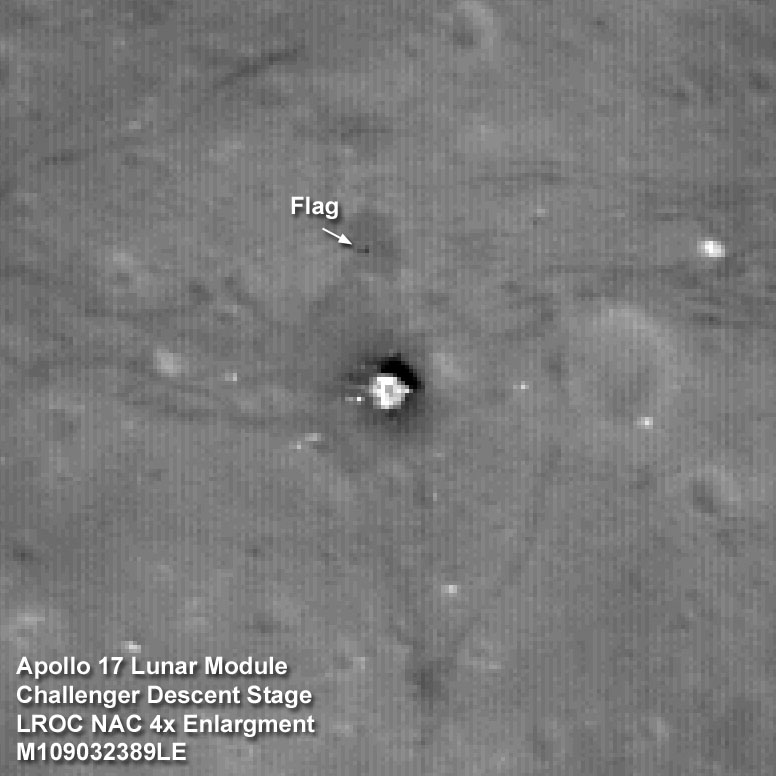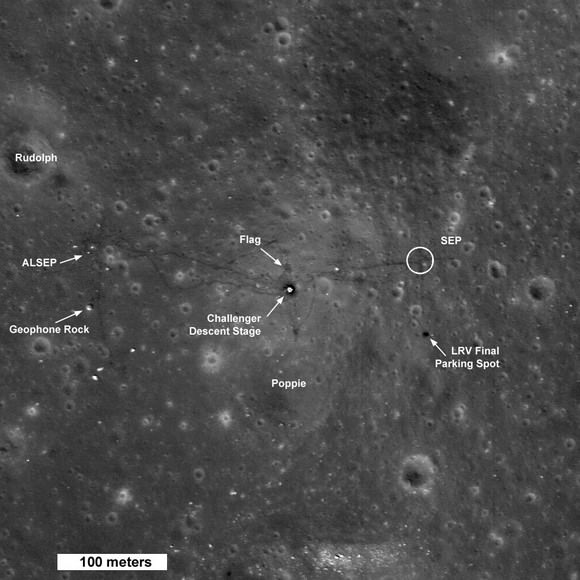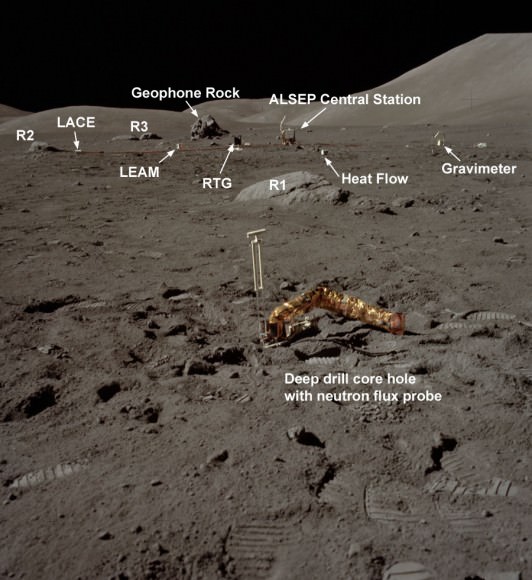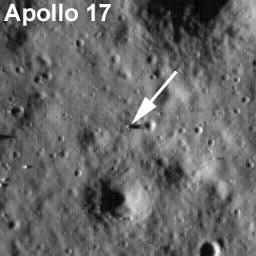[/caption]
The damage seen on the Ares I-X booster occurred as a result of parachute failure, which caused the rocket to impact the water harder than expected. Ares I-X manager Bob Ess briefed reporters today on the preliminary data from Wednesday’s test flight of NASA new rocket, and said the parachute failure was not a significant event. “The damage we see is analogous to when there has been parachute failure on the space shuttle boosters, but actually the parachute guys were ecstatic overall and are not worried about it,” Ess said. “This is all part of doing a test flight, so team is still very elated. The fact that the parachute team has something interesting to go work makes them excited. The damage was all collateral because of the parachute.” He also touched on the “tumbling” of the second stage, and their findings on thrust oscillation for the vehicle.
Ess said all three chutes initially deployed as planned: pilot chute, then drogue chutes, then the three main chutes come out and partially deploy to a 50% open condition to avoid shock to the material. But at that point one of the mains failed and basically became a streamer. Ess said it appeared the lines went slack, which would be indicative of a problem with the riser lines and not the parachute material. Then a second chute may have gotten damaged from the bad “streamer” parachute and the second chute didn’t open all the way. So instead of coming down on three parachutes, it only had one and a half. “So that caused the booster to hit the water at a higher speed than expected, with more horizontal velocity, so booster slapped down pretty hard which caused damage on the booster.”
Additionally the booster was 15% heavier than the booster that will be used for Ares 1. “This was an overtest, so it does not detract from the success of the flight,” Ess said.
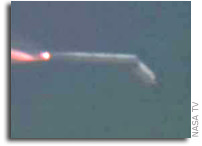
The tumbling seen as the two stages separated was actually not unexpected and Ess said he misspoke at the press briefing on the day of the test flight as the separation being “interesting” (and his team immediately let him hear about it!). “We’ve actually done thousands of animations showing this type of behavior on the upper stage, and the models predicted this is what we would see. It was the manager who didn’t say it right,” Ess joked.
The upper stage on the test flight was a “dummy” and was loaded with 30,000 pounds of ballast near the bottom to simulate a full load of liquid oxygen rocket propellant and another 30,000 pounds higher up to simulate liquid hydrogen fuel.
The center of gravity was in an unusual spot, making it inherently unstable, so it behaved exactly as a heavy, unstable projectile would. “Once you separate, there’s nothing to control it,” Ess said. “In reality, the Ares I will have the J-2X engine on it, and everything will be fine.”
The much ballyhooed thrust oscillations the vehicle might encounter were basically non-existent on Wednesday’s test flight. “We had two sensors to measure this and so far the oscillations look very small, similar to what the shuttle might encounter,” Ess said. “We didn’t see anything unusual or remotely like anything to indicate that thrust oscillation was a factor.”
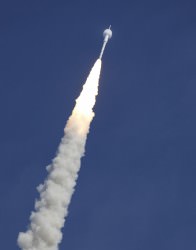
At Wednesday’s briefing, Ess said the vehicle has three pairs of thrusters to keep things under control if thrust oscillation would become a problem. Their simulations said they might encounter 20-25 firings of the automatic thrusters during flight, but in actuality, there were only three.
“We’re just not seeing any significant numbers for thrust oscillation,” Ess said. “It’s the impact on the vehicle that you worry about, and so far we haven’t seen it but we’ll look closer at the data in the next few weeks.”
The damaged booster contains the flight data recorder, and Ess thought they should get access to it on Saturday and begin looking at the data from over 700 sensors on board the vehicle.
Since test flights are done to bring up major problems, Ess was asked if he wished there were more issues to tackle. “It was a great flight, and the parachute problem is a minor thing, and we have a few more year to go look at it,” he said. “When something is a little different, you get excited, as an engineer. But we were ecstatic and no one is sad we didn’t have any more problems. We still have to look at the sensors, so there’s a lot in front of us. But there’s nothing pride from the team that it went as well as it did.”
Source: NASA press briefing

